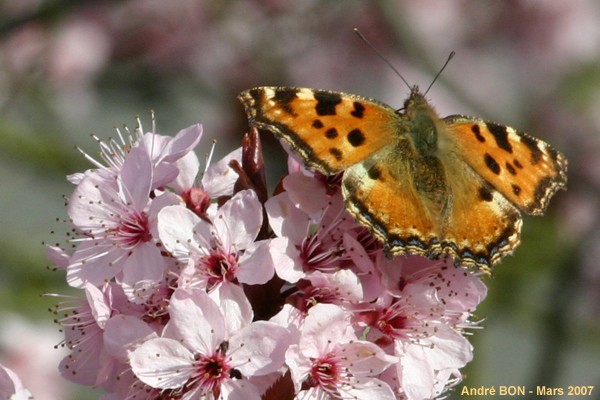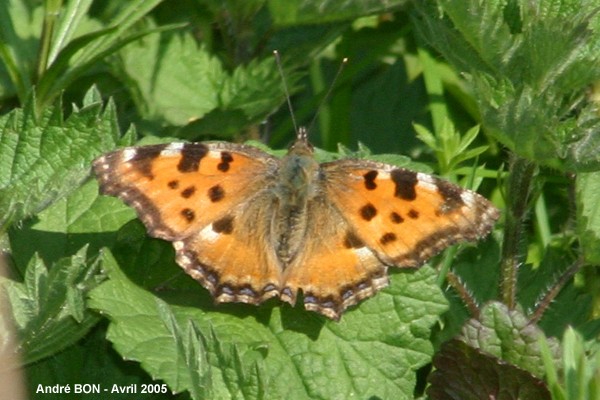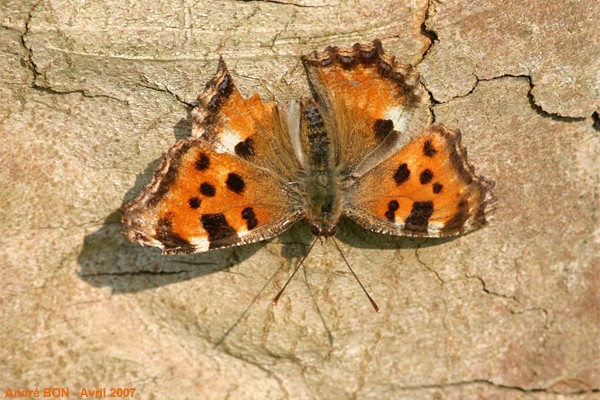


| Large Tortoiseshell (Nymphalis polychloros (Linnaeus, 1758)) |



|
|
Scientific name: Nymphalis polychloros (Linnaeus, 1758) Common name: Large Tortoiseshell French name: Grande tortue, Vanesse de l'orme Order: Lepidoptera Suborder: Rhopalocera Family: Nymphalidae Subfamily: Nymphalinae Wingspan: 50-63 mm Biotope: Geographic area: Europe, missing in Ireland, rare in northern Scandinavia. Temperate Asia to western Siberia. North of Morocco. Flight time: June to October. Number of generations : 1 Caterpillar: Black with orange spines. Host plant: Elm (Ulmus), Poplar (Populus), Willow (Salix) |
You can first distinguish the Large Tortoiseshell from the Small Tortoiseshell (Aglais urticae) by the size (as indicated by the common name). There are 4 dark spots on the fore wing (compared to 3 for the Small Tortoiseshell). The dark spots on the fore wing are round-shaped. There is a possible confusion with the Yellow Legged Tortoiseshell (Nymphalis xanthomelas), but this one is very rare. The Yellow Legged Tortoiseshell has yellow and hairy legs, the Large Tortoiseshell has very dark black legs. |
| [To know more about the Large Tortoiseshell] [Next picture] [Top] |

|
In spring 2007 I had only observed one specimen of this species. That's while I was admiring cherry blossoms that I saw about a tenth of Large Tortoiseshell butterflies busy gathering nectar. |
| [To know more about the Large Tortoiseshell] [Next picture] [Previous picture] [Top] |

|
Here is my first observation, not very close, of a Large Tortoiseshell. It was landed on nettle leaves and flew away when I came near. |
| [To know more about the Large Tortoiseshell] [Previous picture] [Top] |

|
The wings of this Large Tortoiseshell are a little damaged. Today I have only observed Large Tortoiseshells just after over wintering. When will I see a beautiful imago just emerging from the chrysalis? |